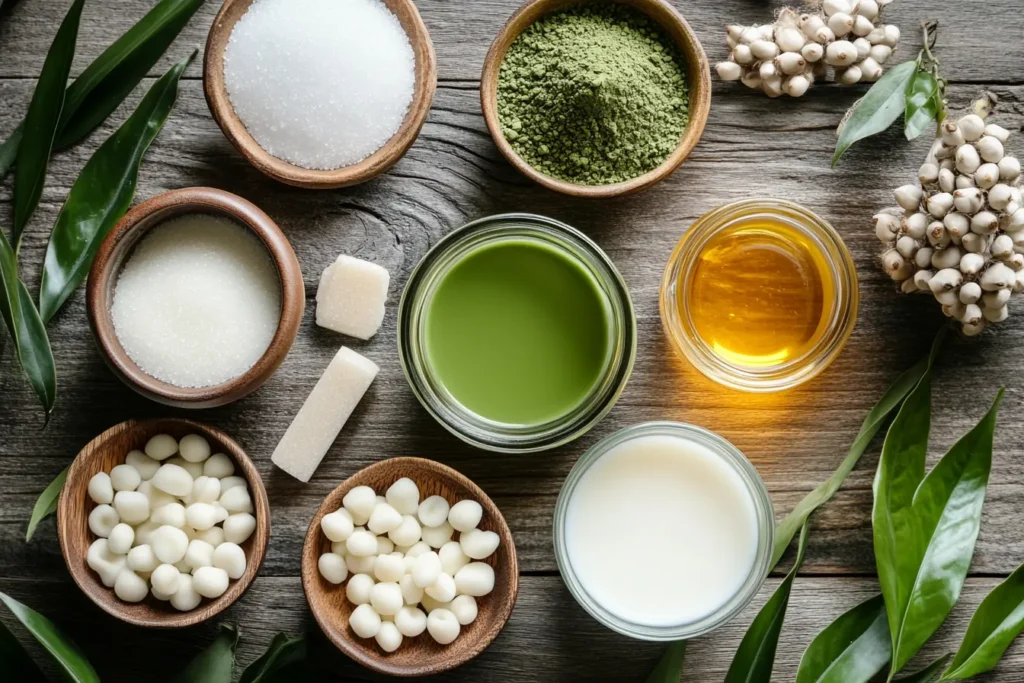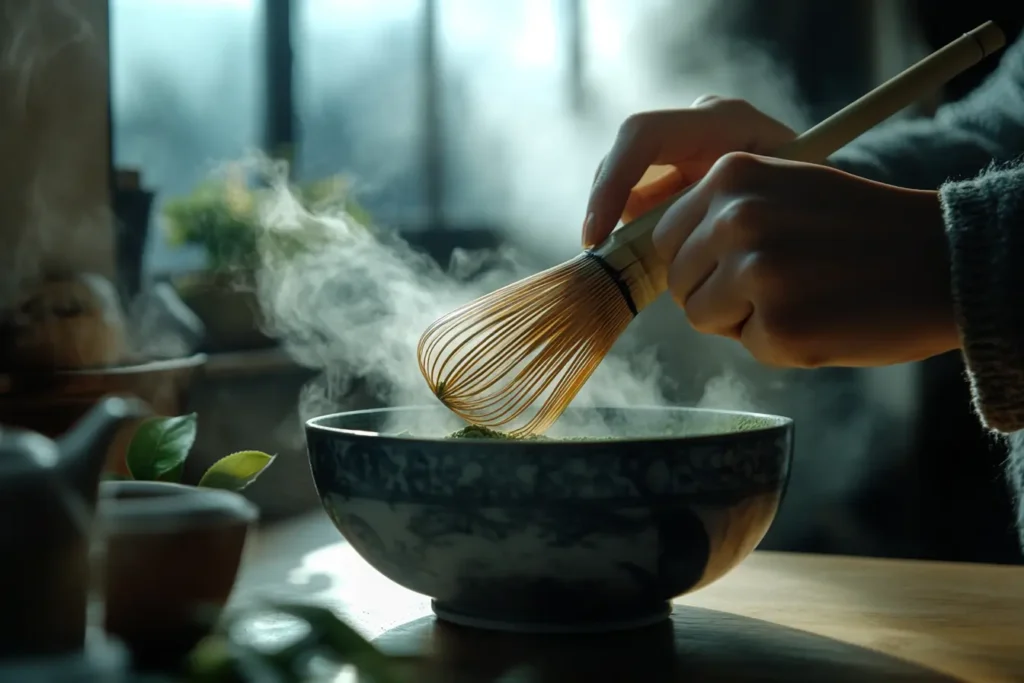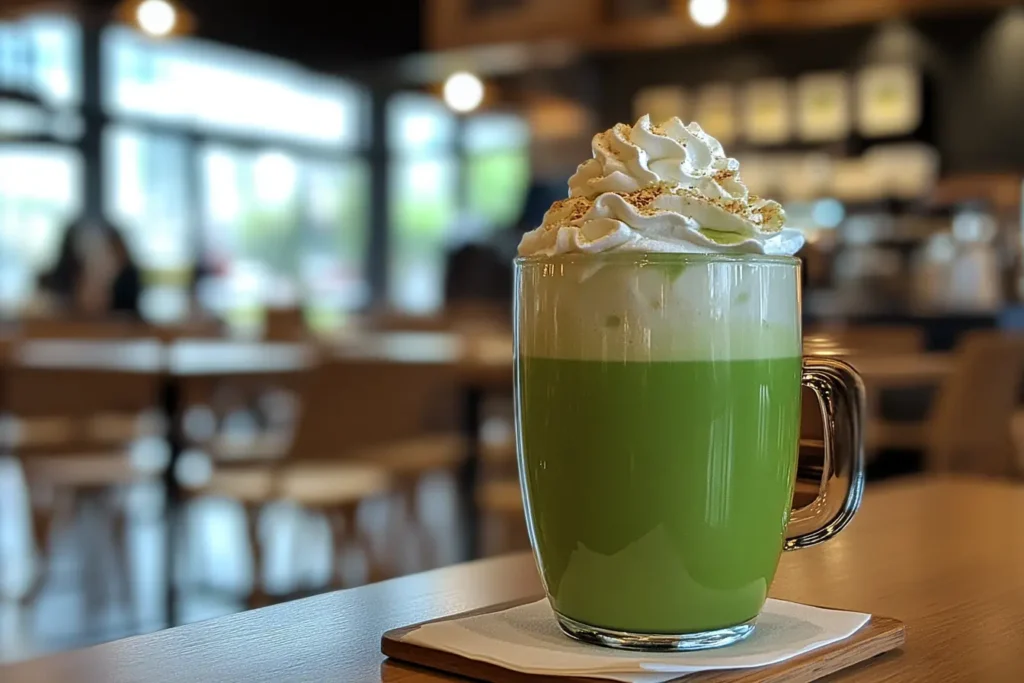Introduction
Green milk tea, a delightful fusion of aromatic green tea and creamy milk, has captured the hearts of tea enthusiasts worldwide. This versatile beverage is not only refreshing but also boasts numerous variations and health benefits. Whether you’re sipping on a matcha milk tea or indulging in a jasmine green milk tea, the journey into this world is as diverse as it is delicious. This article delves into everything you need to know about green milk tea, from its origins to how to make it at home, its variations, health benefits, and cultural significance.
What is Green Milk Tea?
The Origins
Green milk tea has an interesting backstory rooted in the global tea culture. Originating from the combination of traditional green tea and creamy milk, this delightful beverage first gained popularity in East Asia. With its rich history and cultural significance, green tea-based drinks found a modern twist when paired with milk, creating an indulgent yet balanced flavor. Over the years, this blend has become a staple in bubble tea shops and cafés around the world.
Why is Green Milk Tea So Popular?
The Global Rise of Bubble Tea Culture
In recent years, bubble tea has become a worldwide phenomenon, and green milk tea stands out as a crowd favorite. Its unique flavor profile, combining the earthy notes of green tea with the sweetness of milk and optional tapioca pearls, caters to a wide range of taste preferences. Moreover, its association with the trendy boba movement has elevated its status among younger generations.
The Appeal of Green Tea’s Health Benefits
Green tea is celebrated for its antioxidants and metabolism-boosting properties. By incorporating green tea into milk tea, this beverage becomes a guilt-free indulgence that offers a touch of creamy satisfaction without compromising on health benefits. Whether it’s the catechins or the calming effect of theanine, green milk tea combines pleasure and wellness seamlessly.
Popular Variations
is not a one-size-fits-all beverage. With its flexibility, this drink can be customized into delightful variations to suit different tastes. Here are some of the most loved types:
Matcha Milk Tea

Ingredients
- 2 tsp matcha powder
- 200 ml hot water (80°C or 175°F)
- 150 ml milk (whole milk, almond milk, or oat milk)
- 1-2 tbsp sweetener (sugar, honey, or agave syrup)
- Ice cubes (optional)
Step-by-Step Instructions
- Prepare the Matcha Base
- Sift 2 tsp of matcha powder into a bowl to avoid clumps.
- Add 50 ml of hot water to the powder and whisk vigorously in a zig-zag motion until frothy.
- Heat the Milk
- Warm the milk in a small saucepan over medium heat until steaming (don’t let it boil). Alternatively, use a frother for a creamy texture.
- Combine Matcha and Milk
- Pour the prepared matcha base into a cup.
- Add the steamed milk and stir gently to combine.
- Sweeten and Serve
- Stir in your choice of sweetener.
- Serve hot or over ice for a refreshing cold version.
Jasmine Green Milk Tea
Ingredients
- 1 tbsp jasmine green tea leaves
- 200 ml hot water (85°C or 185°F)
- 150 ml milk
- 2 tbsp sweetened condensed milk (or adjust to taste)
- Optional toppings: tapioca pearls, grass jelly
Step-by-Step Instructions
- Brew the Jasmine Tea
- Add jasmine green tea leaves to hot water and let steep for 3–4 minutes. Strain the tea and let it cool slightly.
- Mix with Milk
- In a shaker, combine brewed jasmine tea, milk, and sweetened condensed milk. Shake until well blended.
- Add Toppings
- Pour the tea mixture into a glass and add optional toppings like tapioca pearls or grass jelly.
- Serve and Enjoy
- Enjoy your fragrant jasmine green milk tea, hot or iced.
Iced Green Milk Tea
Ingredients
- 1 tsp green tea powder or 1 tbsp loose green tea leaves
- 200 ml hot water
- 150 ml chilled milk
- Sweetener to taste
- Ice cubes
Step-by-Step Instructions
- Brew your green tea base using hot water.
- Let it cool completely before mixing with chilled milk.
- Stir in sweetener and serve over ice for a refreshing treat.
Nutritional Content (Per 100g)
Matcha Milk Tea
| Nutrient | Amount |
|---|---|
| Calories | 56 kcal |
| Carbohydrates | 7 g |
| Protein | 3 g |
| Fat | 2 g |
| Calcium | 120 mg |
How to Make at Home
Creating at home is an enjoyable and rewarding experience. Whether you’re aiming for a classic recipe or putting your spin on it, follow these detailed steps to brew the perfect cup.
Ingredients You Need
To get started, gather the following essentials:
- Green tea base: Matcha powder, jasmine green tea leaves, or sencha tea leaves.
- Milk: Whole milk, almond milk, oat milk, or coconut milk.
- Sweetener: Sugar, honey, agave syrup, or condensed milk (optional).
- Optional toppings: Tapioca pearls, grass jelly, or whipped cream.
- Extras: Ice cubes (if making an iced version).
Brewing the Perfect Green Tea Base

- Choose the Right Tea
Depending on your preference, select matcha powder for a creamy texture, jasmine green tea for floral notes, or sencha for a robust green tea flavor. - Boil Water
Heat water to the ideal temperature:- Matcha: ~80°C (175°F)
- Loose green tea: ~85°C (185°F)
- Steep the Tea
- For matcha: Whisk 2 tsp of matcha powder with 50 ml of hot water until frothy.
- For loose leaves: Steep 1 tbsp of green tea leaves in 200 ml of hot water for 3–4 minutes.
- Cool Down (If Iced)
Let the brewed tea cool completely before proceeding to the next step for an iced version.
Adding Milk for the Perfect Texture
- Warm the Milk
Heat 150 ml of milk in a small saucepan over low heat. Froth the milk for extra creaminess, if desired. - Combine Milk and Tea
Gradually pour the warm milk into the brewed tea, stirring gently to mix. - Balance the Flavors
Add 1–2 tbsp of sweetener and taste. Adjust to your liking.
Customization Ideas
- Sweeteners: Honey for a natural flavor, or condensed milk for richness.
- Toppings: Add tapioca pearls for a bubble tea twist, or grass jelly for texture.
- Cold Option: Pour the mixture over a glass of ice cubes for a refreshing iced tea.
Nutritional Content (Per 100g)
| Nutrient | Amount |
|---|---|
| Calories | 50 kcal |
| Carbohydrates | 6 g |
| Protein | 2 g |
| Fat | 1 g |
| Calcium | 100 mg |

Health Benefits and Concerns
offers more than just a delicious treat; it’s also packed with several health benefits. However, like all indulgences, moderation is key to enjoying its advantages while avoiding potential drawbacks.
Health Benefits
Rich in Antioxidants
The star ingredient of green milk tea, is known for its high antioxidant content, particularly catechins. These compounds help combat oxidative stress, reduce inflammation, and support overall cellular health. Including green milk tea in your routine can be a tasty way to boost your antioxidant intake.
Boosts Metabolism
The natural compounds in green tea, such as caffeine and EGCG (epigallocatechin gallate), are known to enhance metabolism. This can help in managing weight and improving energy levels, making green milk tea an excellent companion for an active lifestyle.
Calming Effect
The amino acid L-theanine in green tea promotes relaxation without inducing drowsiness. When paired with the comforting creaminess of milk, green milk tea becomes a soothing beverage to enjoy at any time of the day.
Green Milk Tea vs. Regular Milk Tea
often stands out as the healthier choice compared to regular milk tea. Traditional milk teas may use black tea as a base, which is higher in caffeine and lacks some of the unique antioxidants found in green tea. Green milk tea offers a balance of flavor and health benefits, making it a preferred option for health-conscious drinkers.
Potential Drawbacks of Green Milk Tea
Added Sugar Concerns
While green milk tea can be a nutritious choice, the addition of sweeteners like sugar or condensed milk may increase its calorie count significantly. To keep it healthy, consider using natural sweeteners like honey or agave syrup and controlling the quantity.
Lactose Intolerance Alternatives
For individuals who are lactose intolerant, traditional milk may not be an option. Fortunately, plant-based alternatives such as almond milk, oat milk, or coconut milk can be used to create a delicious and creamy green milk tea.
Caffeine Sensitivity
Though green tea has less caffeine than coffee, it can still affect individuals sensitive to caffeine. Reducing the amount of green tea or switching to a decaffeinated variety can help address this concern.
Green Milk Tea in Global Culture
This tea-based delight transcends being just a beverage; it has become a cultural icon that seamlessly blends tradition with modern tastes. Its journey around the world showcases its adaptability and wide-ranging popularity.
In Asia
Taiwan: The Birthplace of Bubble Tea
Taiwan is often credited with popularizing bubble tea, and green milk tea is one of its iconic variations. Taiwanese bubble, shops serve green milk tea with tapioca pearls, making it a must-try for anyone visiting the region. The creamy texture combined with the chewiness of the pearls creates an unforgettable experience.
Japan: The Matcha Connection
In Japan, matcha milk tea reigns supreme. Matcha’s earthy flavor and cultural significance in traditional tea ceremonies have made it a natural fit for milk tea. Whether served hot or iced, matcha milk tea is a staple in Japanese cafés.
The Rise of Green Milk Tea in the West
From Cafés to Boba Shops
This creamy tea beverage has garnered a loyal following in Western countries, especially in bustling urban areas. Specialty cafés and bubble tea shops serve innovative options such as iced jasmine milk tea and matcha lattes. These trendy spots have evolved into social hubs, attracting people who love indulging in unique, refreshing drinks.
Health-Conscious Appeal
Known for its health-boosting properties, this green tea-based drink aligns perfectly with modern wellness trends in the West. Many individuals prefer plant-based milks and natural sweeteners, tailoring the beverage to suit their dietary needs and lifestyle preferences.
Fusion and Innovation
Green milk tea’s adaptability has inspired countless fusion recipes around the world. From adding exotic toppings like aloe vera jelly to experimenting with flavors like lavender or coconut, this drink has become a canvas for culinary creativity.
Frequently Asked Questions
As green milk tea grows in popularity, many people have questions about its preparation, health benefits, and customization. Here are answers to some of the most common queries:
1. How Many Calories Are in Green Milk Tea?
The calorie content of green milk tea depends on the ingredients and preparation method. A basic cup made with matcha, milk, and minimal sweetener typically contains around 50–100 calories. Adding toppings like tapioca pearls or using condensed milk can significantly increase the calorie count.
2. Can I Make Green Milk Tea Without Sugar?
Absolutely! Green milk tea can be enjoyed unsweetened or with natural sweeteners like honey, stevia, or agave syrup. Adjusting the sweetness allows you to tailor the drink to your taste and dietary needs.
3. What’s the Difference Between Matcha and Green Milk Tea?
a popular variation of this creamy tea blend, is made specifically with powdered matcha, which gives it a vibrant green color and a subtle, grassy flavor. In contrast, other types of green tea-infused drinks may use loose leaves like jasmine or sencha, offering a milder and more delicate taste profile.
4. What Are the Best Toppings for Green Milk Tea?
Green milk tea is incredibly versatile, and popular toppings include:
- Tapioca pearls for a chewy texture
- Grass jelly for a subtle herbal note
- Aloe vera cubes for a refreshing twist
- Whipped cream for added indulgence
7. Can I Use Plant-Based Milk in Green Milk Tea?
Yes, plant-based milk works wonderfully in green milk tea. Almond, oat, and coconut milk are excellent choices that add unique flavors while catering to lactose-intolerant or vegan preferences.

